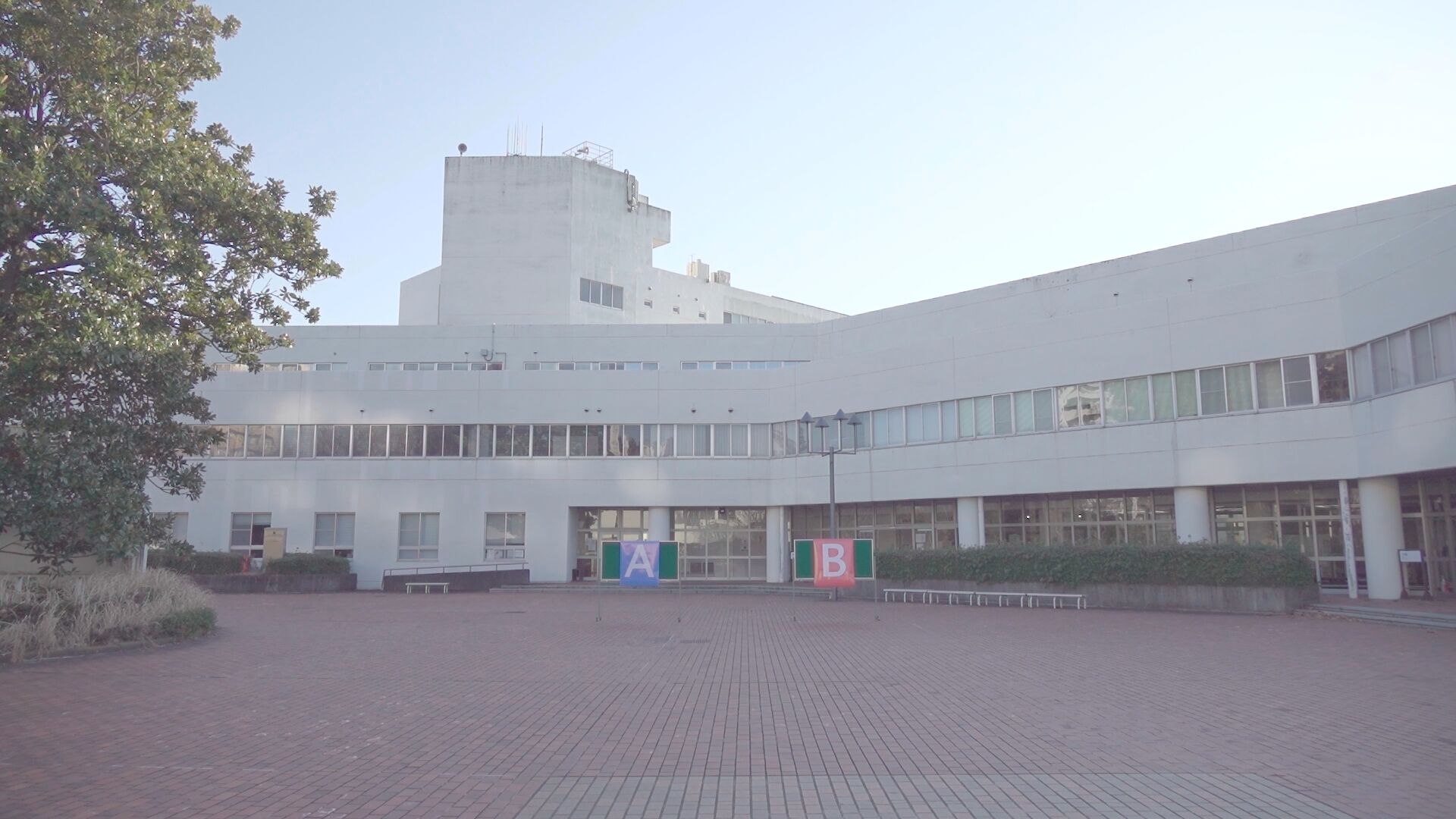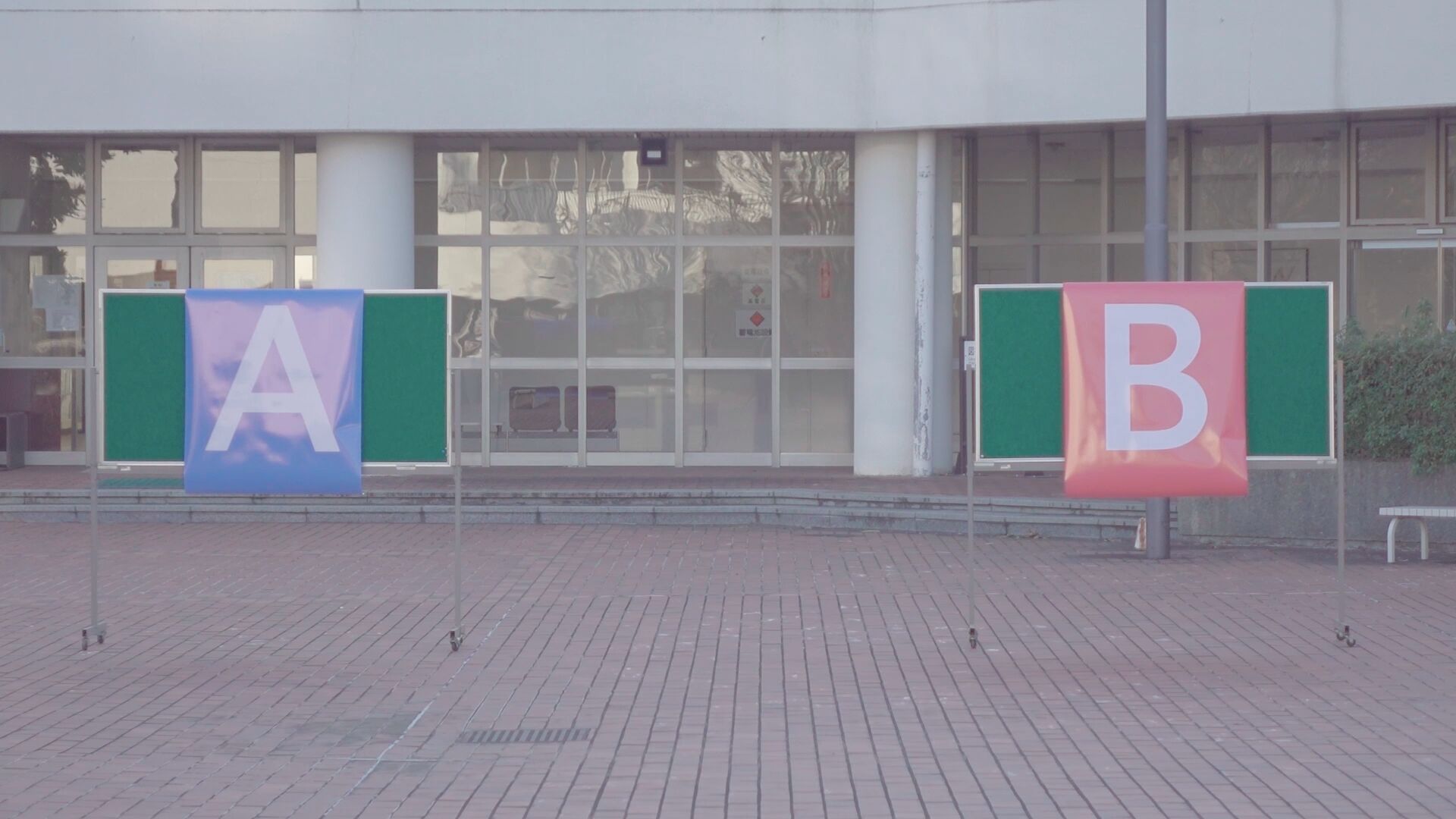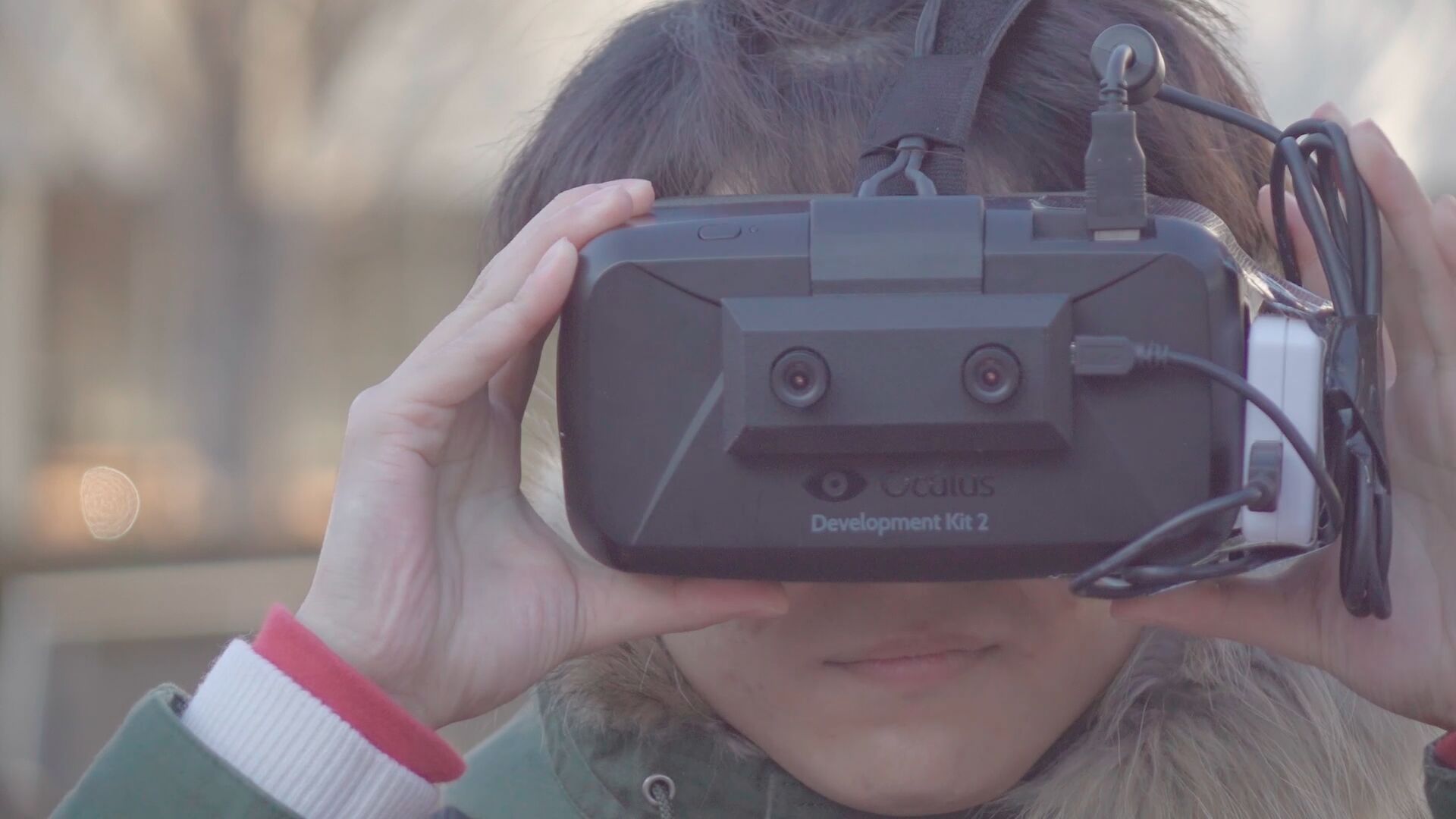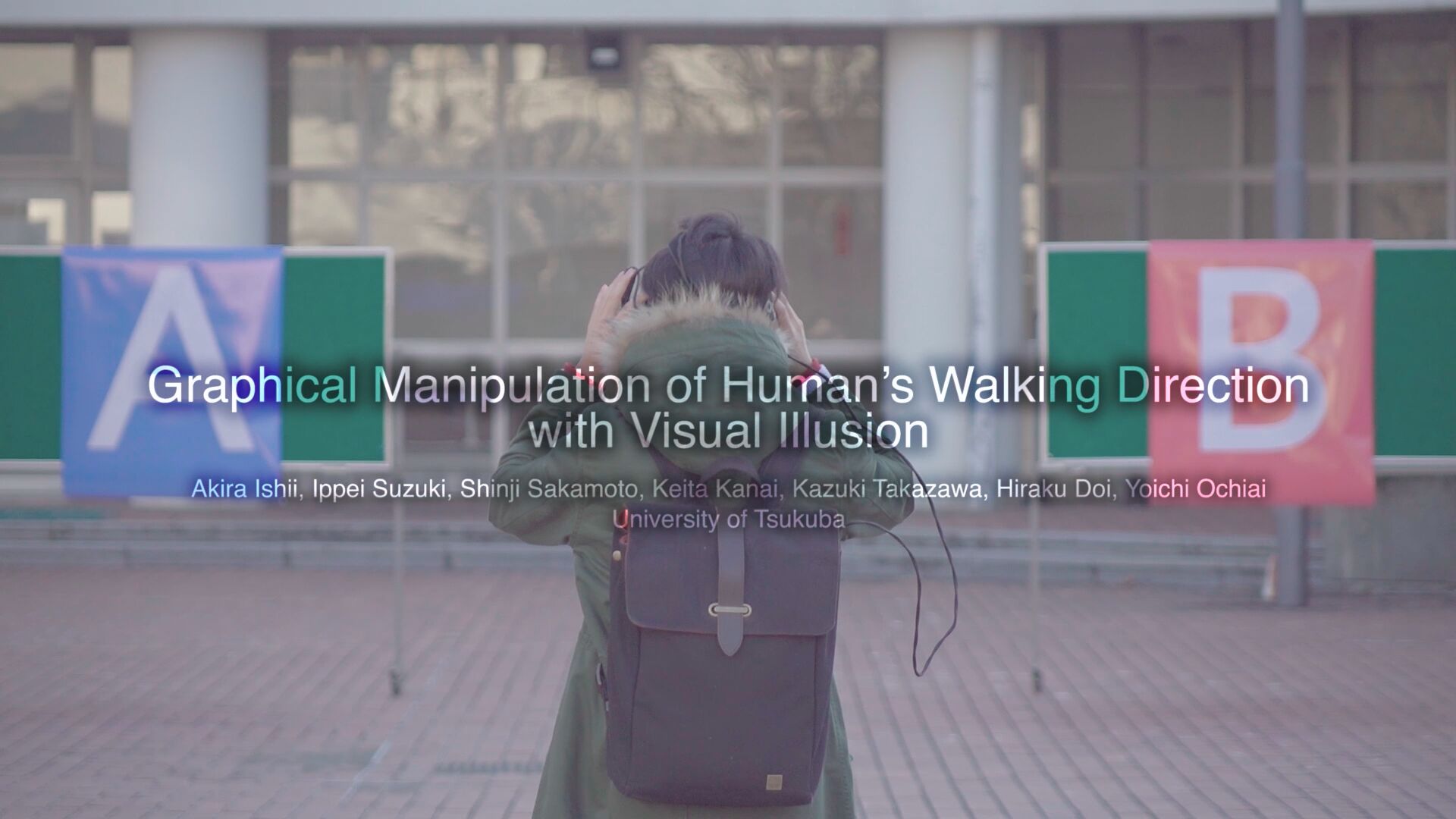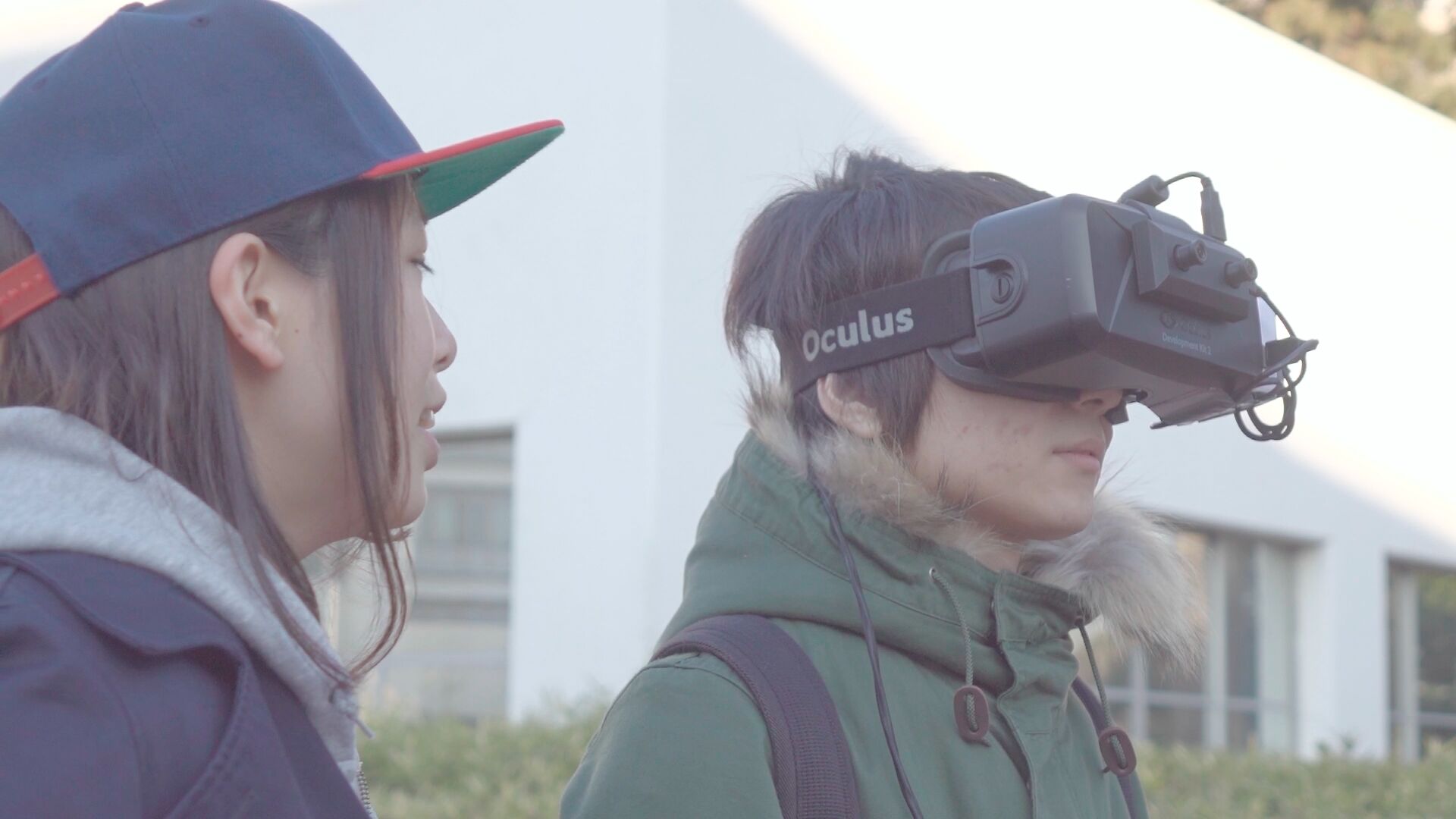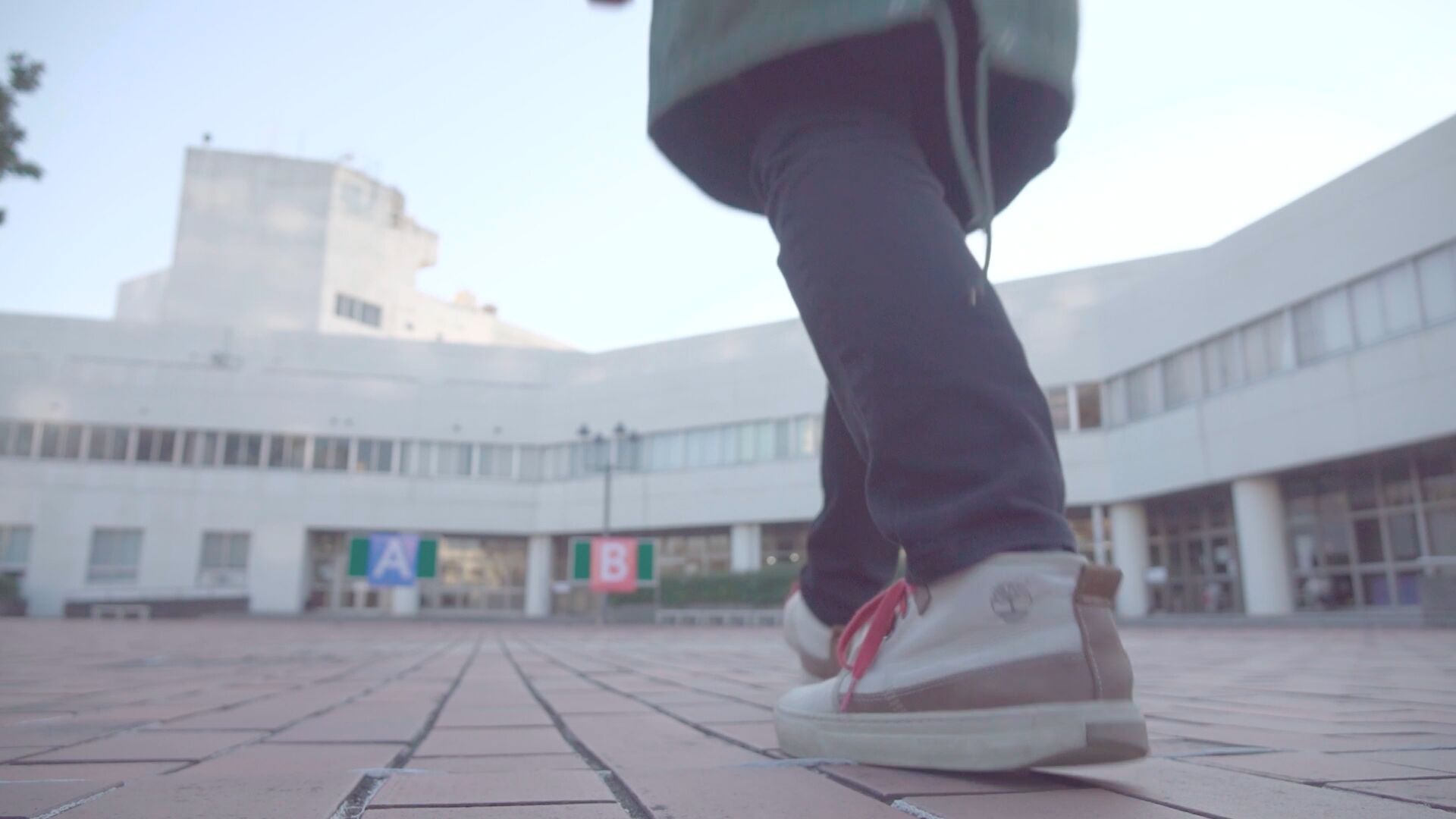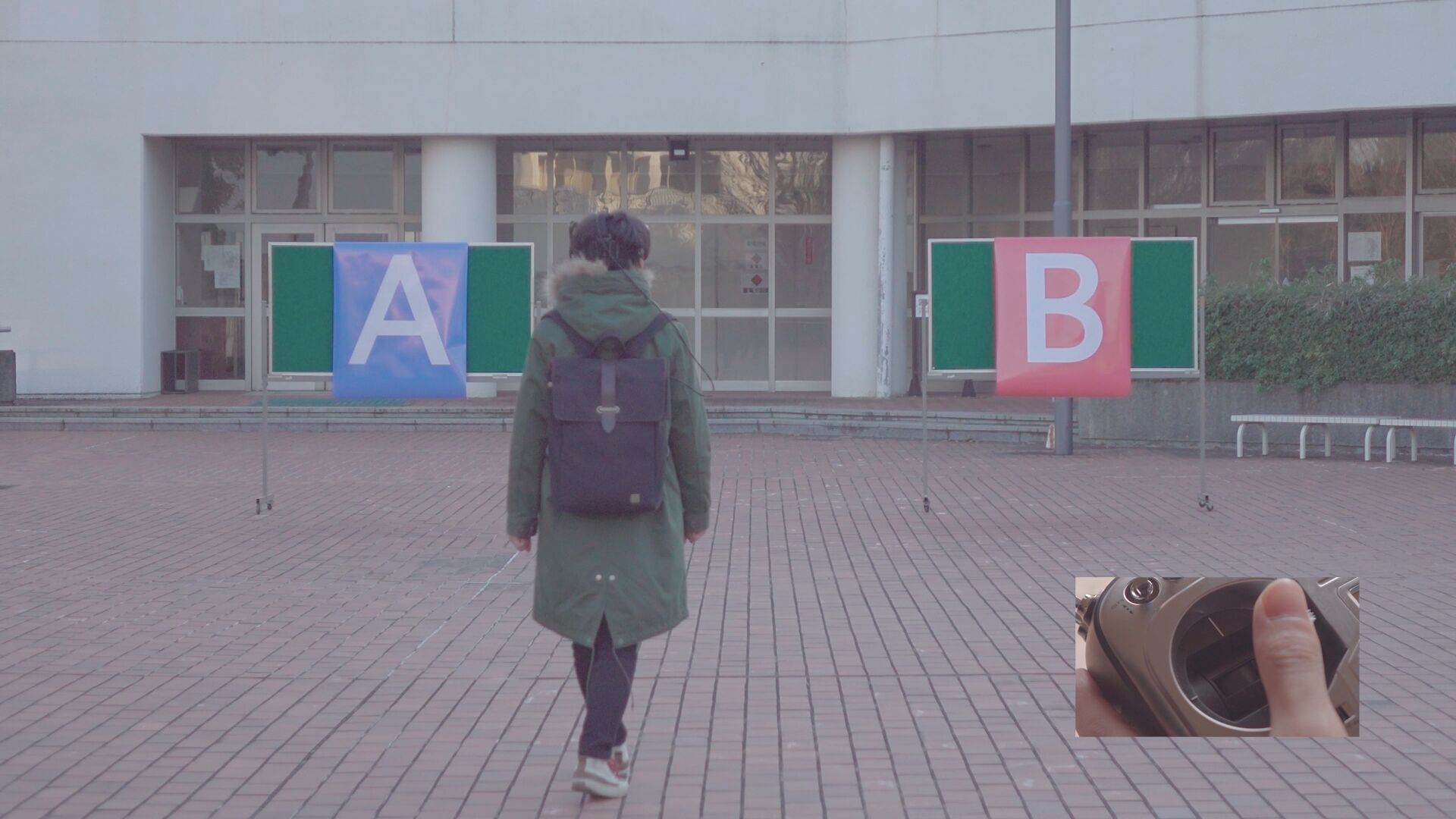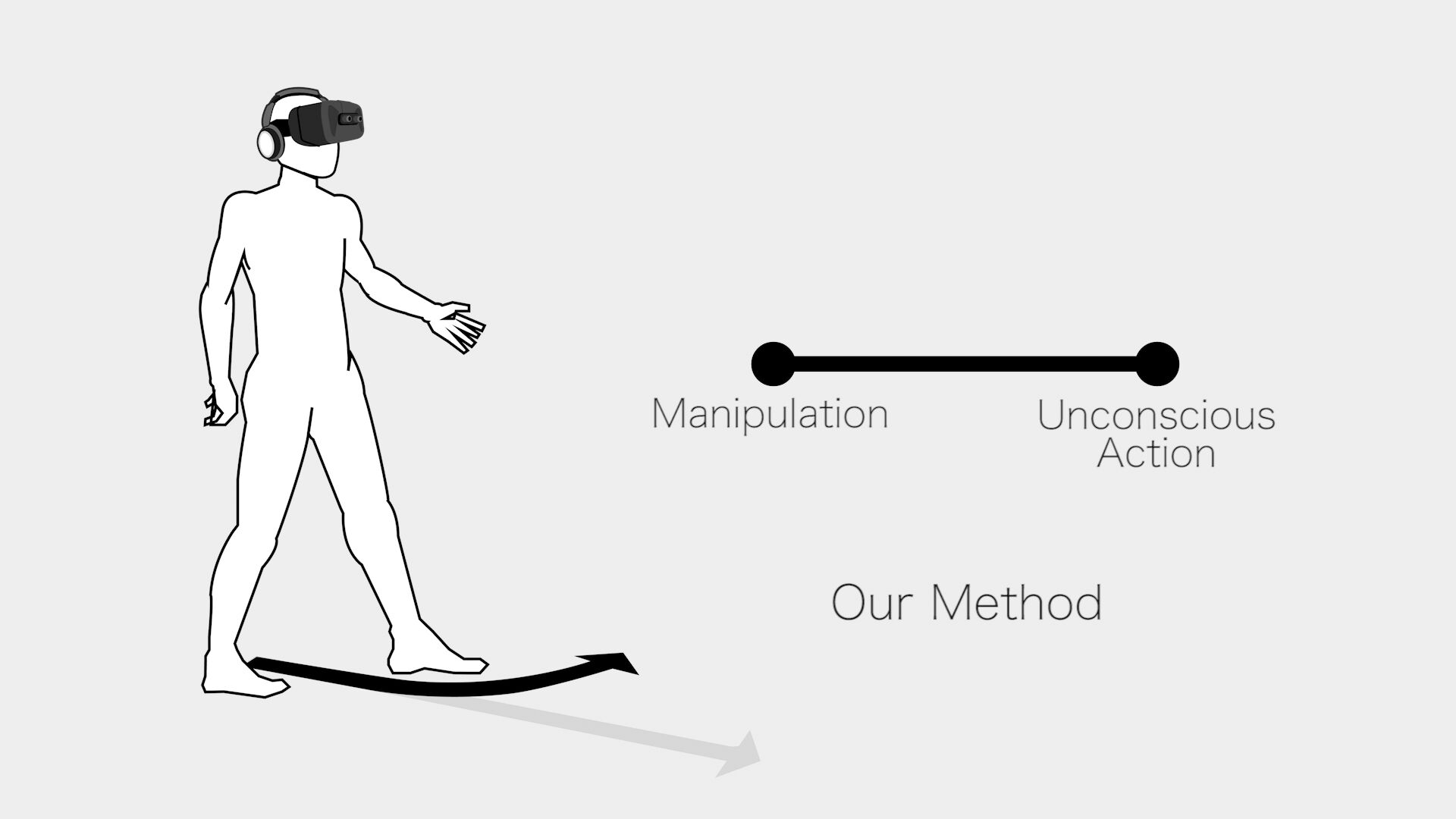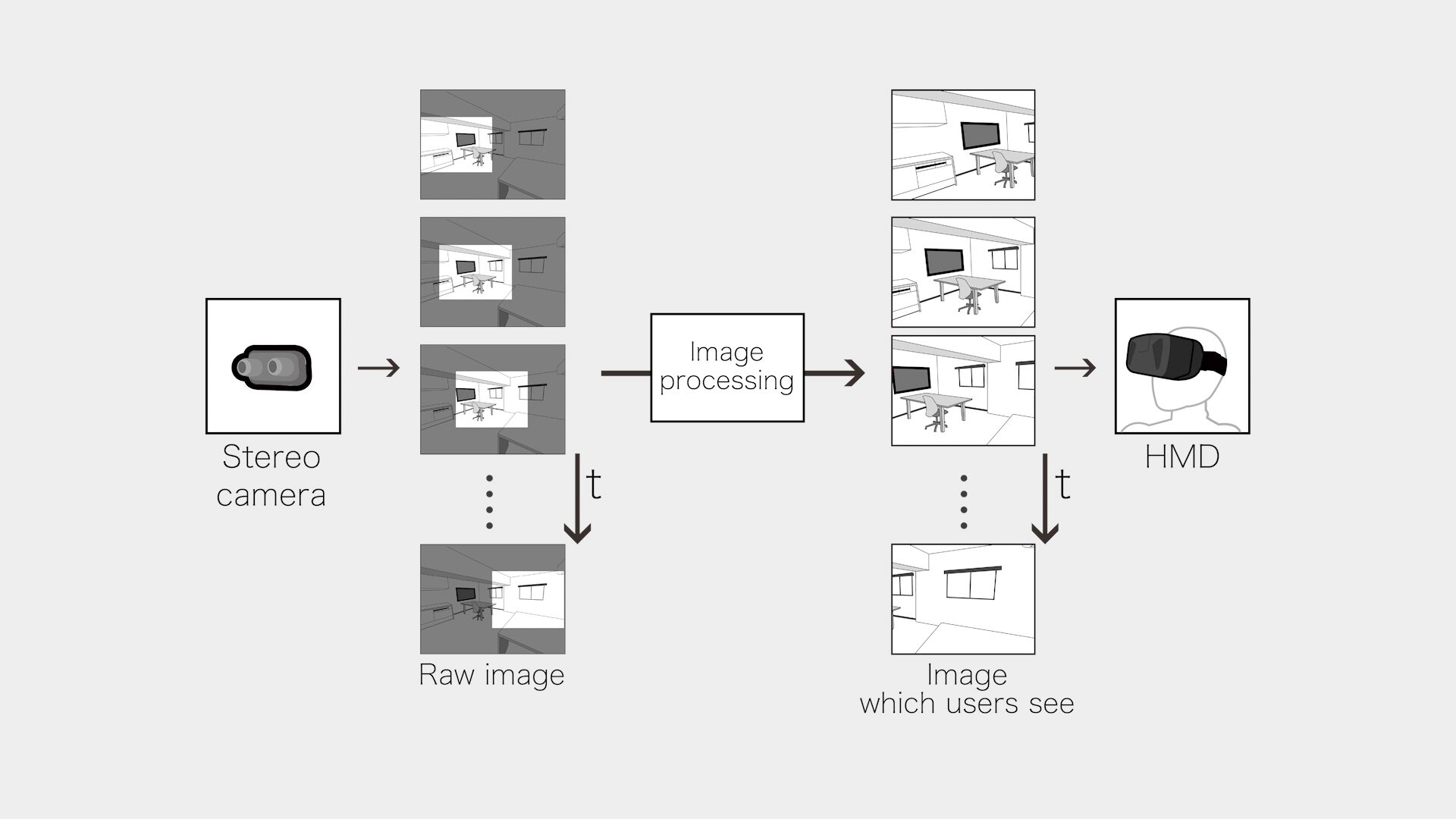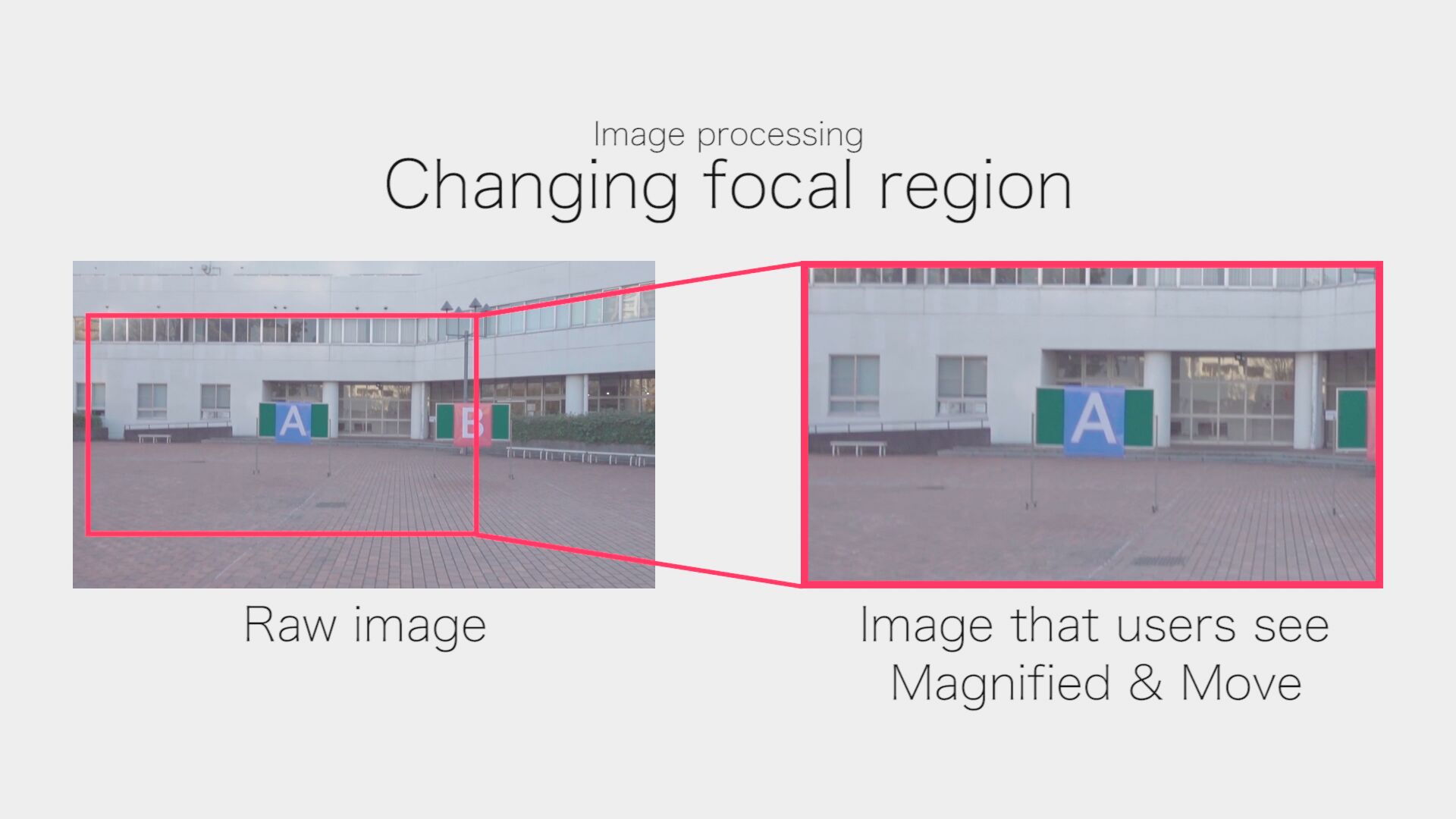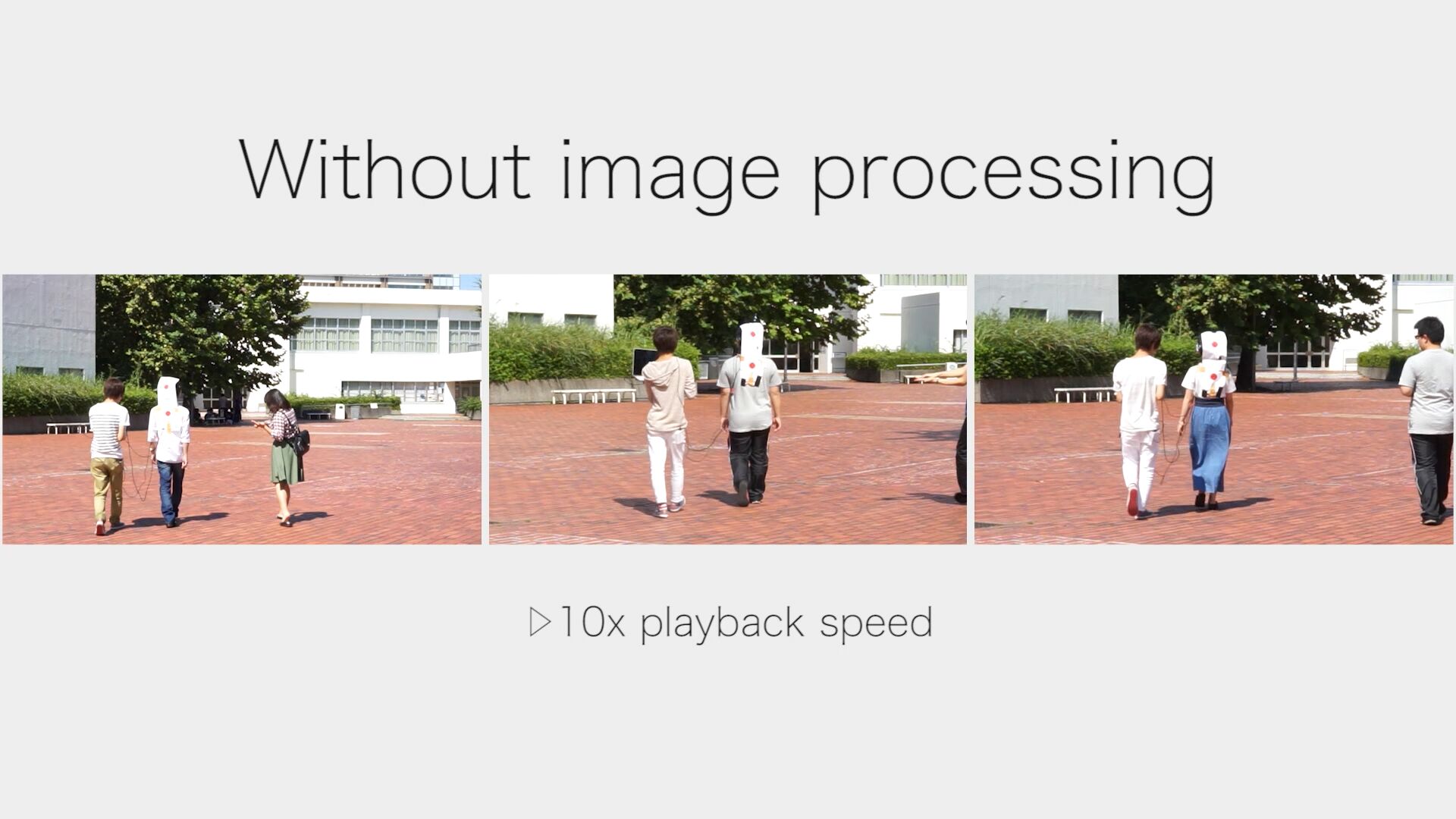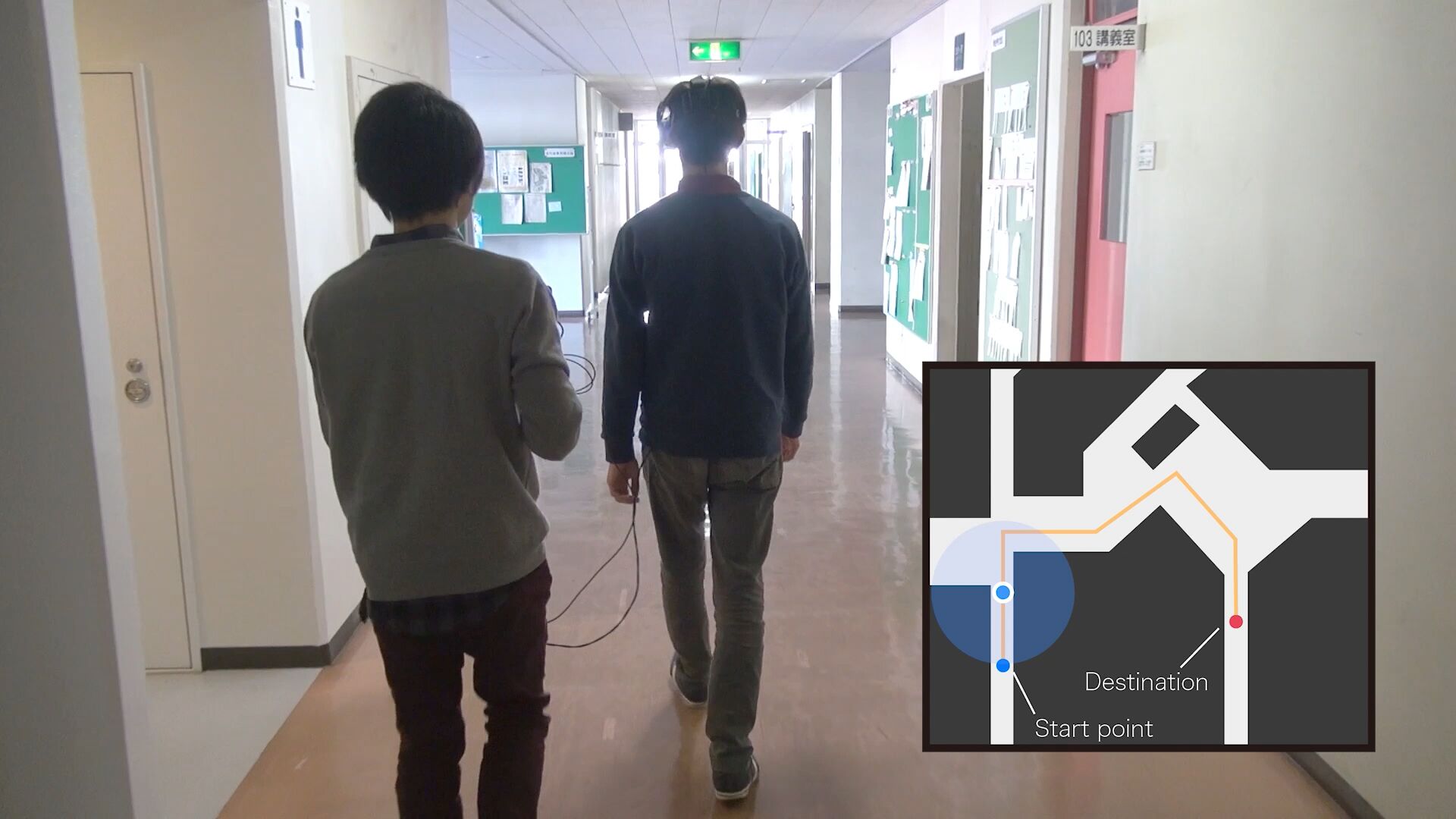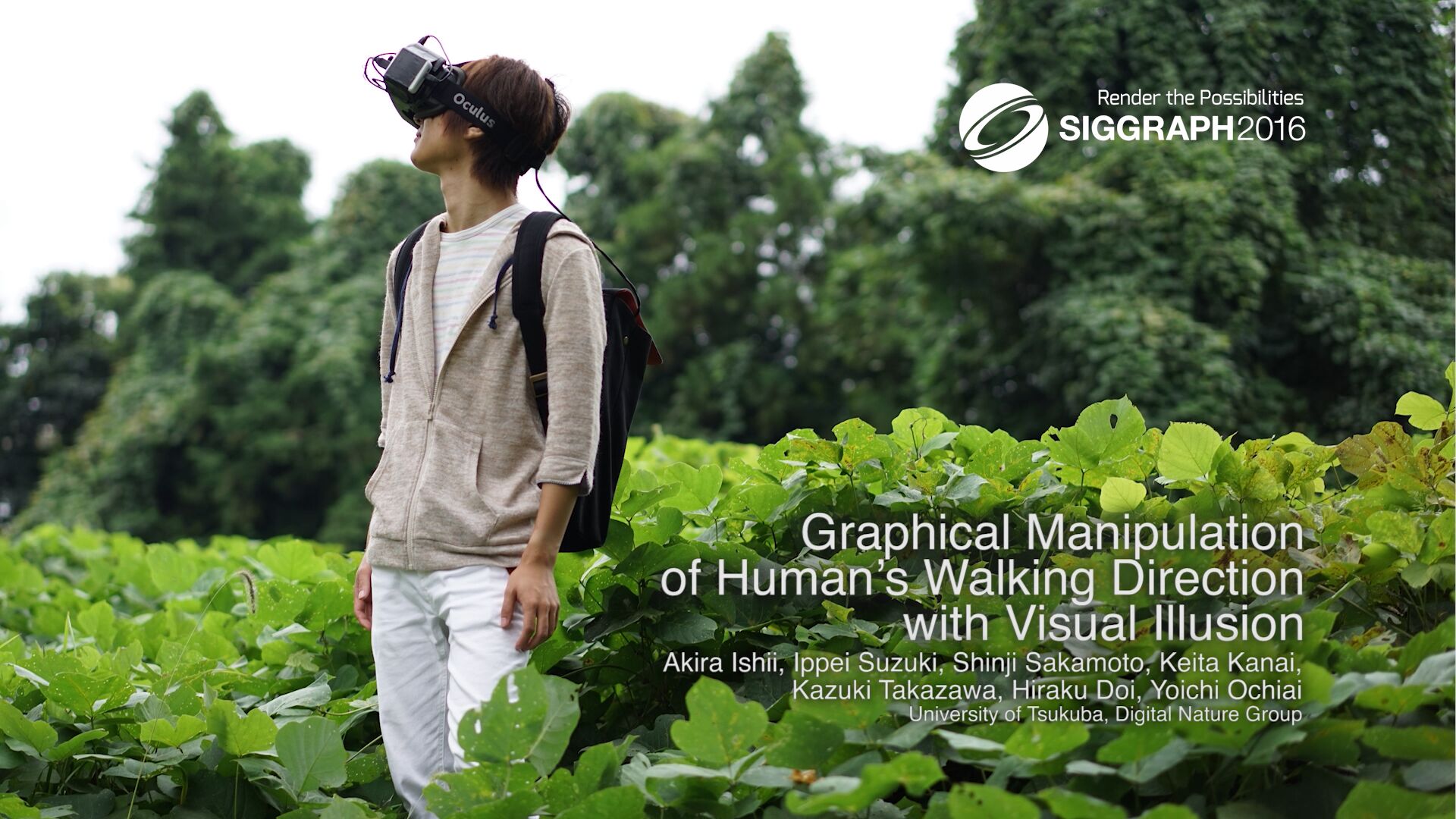Graphical Manipulation of Human's Walking Direction with Visual Illusion
Conventional research on pedestrian navigation systems has explored the possibilities of presenting information to users both visually and aurally. Existing navigation systems require users to recognize information, and then to follow directions as separate, conscious processes, which inevitably require attention to the system. This study proposes a novel method that enables pedestrians to be guided without conscious interaction with a navigational system. In this study, we employed a combination of an HMD and a stereo camera for pedestrian control. This system, displaying images as if the HMD were transparent, controlled the pedestrian's direction by superimposing a visual illusion onto the raw images. When users walk, our system provides them with real-time feedback to their sight by processing the images that they have just perceived. To determine how to control pedestrian direction using the image processing method, we examined four image processing types: without processing, the moving stripe pattern method, magnification, and the changing focal region method. Based on the result, the changing focal region method worked most effectively for pedestrian movement control, and changed the pedestrian's walking path by about 190 mm/m on average.
本研究は視覚的錯覚を用いてナビゲーションシステムから提示された情報を意識的に見なくても歩行者を制御可能にする新しい手法である。これまでの歩行者ナビゲーションにおける研究は,ユーザに対し情報を視覚的にそして聴覚的にどのように提示するかが議論されてきた。既存のナビゲーションシステムは「右へ曲がれ」のような「指示情報を提示し,人が認識する」という意味では,その見せ方は30年間進化していない。ナビゲーションは,マップや矢印の提示する空間と自分の自己位置認識がうまく適応できないとユーザーに負荷をかける。そこで情報を提示するのではなく,人間を無意識に制御すれば良いのではないかと考えた。本システムはカメラとHMDを用い,ユーザはカメラとHMD越しに現実世界の風景を捉える。ユーザが歩行している時に,システムはカメラから捉えられた映像に対し画像処理を行うことにより,ユーザの視界に対してリアルタイムな視覚的フィードバックを与える。本システムはユーザに対して視覚的錯覚を引き起こすような画像処理を行い,そしてそれをフィードバックすることによりユーザの歩行方向を無意識的にコントロールする。
Credits
Related Materials
